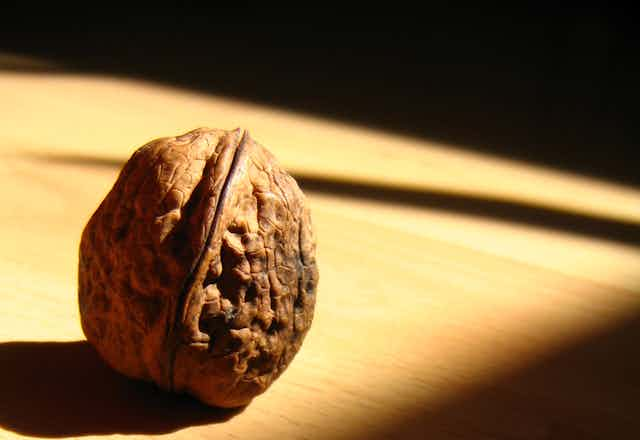This is part of our series on hidden or stigmatised health conditions in men. Read the other articles in the series here.
Conversation about how often you have to get up at night for a piddle is probably not the most scintillating discourse. But there’s a much bigger reason men don’t like to talk about prostate conditions.
My experience as a practising urologist suggests most men don’t like talking about their enlarged prostate because they actually have no idea what their prostate even is or does, let alone how it can cause problems when it gets bigger with age. They’ve heard of it of course, they know it’s somewhere down there and that it can get cancer in it, but mostly I suspect that’s about the extent of it.
So, let’s get back to basics and explain to these guys (you?) what the prostate is, what it does, and what can happen when it enlarges due to benign prostate hyperplasia (enlargement).
What is the prostate?
The prostate is a gland made of solid tissue that sits right under a man’s bladder and surrounds its outlet. The prostate’s job is to make semen so sperm that are shot up from the testes at ejaculation have got transport and food for their journey to the promised land of the female fallopian tube.
The prostate is normally about the size of a walnut, but once men hit their 50s and beyond it’s very common for their prostate to grow. This is not cancer and appears to have nothing to do with cancer. We don’t know exactly why the prostate decides to grow at this point, but it appears to be due to some interplay between hormones.
Because the prostate surrounds the bladder outlet, when it enlarges it sometimes constricts the outlet, causing a weak flow of urine and incomplete bladder emptying. This can lead to other symptoms such as urgency and frequency of urination, commonly at night (nocturia). All together, we call these lower urinary tract symptoms.
The worst-case scenario in benign prostate hyperplasia is when the bladder blocks off altogether (acute retention). This is excruciatingly painful and requires urgent insertion of a catheter, which externally drains the urine.

Diagnosis
The classic presentation is a middle-aged or older man complaining of these lower urinary tract symptoms. A doctor’s rectal examination, where the back of the prostate can be felt, or an ultrasound will usually then reveal an enlarged prostate. Incidentally, prostate cancer rarely causes lower urinary tract symptoms, but is common in exactly the same age group, complicating its diagnosis.
Symptoms raising a red flag that plain old benign prostate hyperplasia may not be the underlying cause of lower urinary tract symptoms are painful urination (dysuria) and blood in the urine (haematuria). Either of these may indicate cancer or infection of the urinary tract and always require further tests to rule them out. If symptoms are just standard lower urinary tract symptoms such as urgency and frequency of urination, no further tests are required.
Treatment
The most important thing to know is if the symptoms don’t particularly bother you, you don’t need any treatment at all. Your symptoms might get worse over time, but they can be effectively dealt with if and when they do cause a sufficient impact on quality of life.
Medicines are the most common treatment for bothersome urinary tract symptoms due to prostate enlargement. Many of these can be given as a single daily tablet.
Alpha1-blockers appear to work by relaxing the muscle fibres in the prostate, reducing its constriction of the bladder outlet. These typically provide relief of symptoms within just days of starting them.
Interestingly, one of the drugs usually used to treat erectile dysfunction (tadalafil) works in a similar fashion. Its low-dose form is also approved for use in treating these urinary symptoms.
5-alpha-reductase inhibitors (5-ARIs) are a totally different kind of drug, which shrink the glandular tissue of the prostate, reducing its bulk to eventually reduce constriction by the prostate as well. But these take much longer to work, so their effect typically isn’t noticed for several months. Also, these drugs can sometimes cause erectile dysfunction and reduced libido. One available drug combines both alpha1-blocker and 5-ARI in the one tablet.
Alpha1 blockers and 5-ARIs both act on the prostate, but sometimes it may not be the prostate itself that is causing these symptoms, but overactivity of the bladder instead. So if urgency and frequency of urination are the main symptoms, a drug that works directly on relaxing the bladder muscle (detrusor) might be a better option. A variety of these are now available.
Although some people swear by the natural medicine saw palmetto, the most rigorous examination of the evidence tells us it is no better than placebo.
Surgical options, although highly effective, tend to be reserved for more severe symptoms, or when inadequate bladder emptying has led to the relatively rare consequences of bladder stones, recurring urine infection or kidney failure.
So now you’re up to date with your prostate and benign prostate hyperplasia, you don’t have to be afraid to ask your mates about their walnuts.
Further reading:
Men more reluctant to go to the doctor – and it’s putting them at risk

